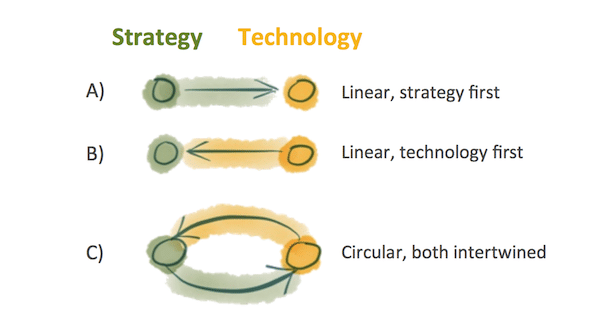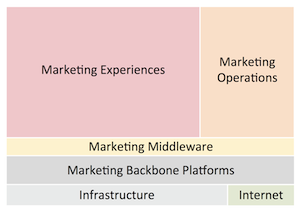This should have been the last post of 2013 but you know how the holidays and weather (snow removal) get in the way of real work. However, throughout the month of December emails and messages, meetings, and reading peppered me with reminders that search surrounds everything we do. In my modest enterprise, findability issues occupy a major portion of my day and probably yours, too.
Deciding how important search is for workers in any enterprise is easy to determine if we think about how so many of us go about our daily work routines:
- Receiving and sending emails, text messages, voice mail,
- Documenting and disseminating work results,
- Attending meetings where we listen, contribute, view presentations and take notes,
- Researching and studying new topics or legacy content to begin or execute a project
As content accrues, information of value that will be needed for future work activities, finding mechanisms come into play, or should. That is why I probably expend 50% of my day consuming content, determining relevance and importance, deciding where and how it needs to be preserved, and clearing out debris. The other 50% of the time is devoted to retrieving, digesting and creating new content, new formulations of found material. The most common outputs are the result of:
- Evaluation of professionals who would be candidates for speaking at programs I help organize,
- Studying for an understanding of client needs, challenges and work environments,
- Evaluation of technology solutions and tools for clients and my own enterprise,
- Responding to inquiries for information, introductions, how-to solve a problem, opinions about products, people or processes,
- Preparing deliverables to clients related to projects
Without the means and methods of my finding systems, those used by my clients, and those in the public domain, no work would get done. It is just that simple.
So, what came at me in December that made the cut of information to be made findable? A lot, but here are just three examples.
Commentary on metadata and taxonomy governance was a major topic in one session I moderated at the Gilbane Conference in Boston, Dec. 3-4, 2013. All of the panelists shared terrific observations about how and why governance of metadata and taxonomies is enterprise-critical; from one came this post-conference blog post. It, Taxonomy Governance, was written by Heather Hedden, author of The Accidental Taxonomist and a frequent speaker on taxonomy topics. The point here: when you engage in any work activity to consistently organize and manage the professional content in your possession, you are governing that material for findability. Anything that improves the process in the enterprise, is going to be a findability plus, just as it is for your own content.
Also in December, the Boston KM Forum hosted Allan Lewis, an “informaticist” at Lahey Health in Massachusetts; he is responsible for an initiative that will support healthcare professionals’ sharing of information via social business software tools. As a healthcare informatics professional, working with electronic clinical data sets to better codify diagnostic information, Allan is engaging in an enterprise-wide project. It is based on the need for a common view of medical conditions, how to diagnose them, and assign accurate classification to ensure the best records. Here is an issue where the quality of governing rules will be reached through consensus among medical experts. Again, findability is a major goal of this effort for everyone in a system, from the clinicians who need to retrieve information to the business units who must track cases and outcomes for accountability.
Last, from among the hundreds of information resources crossing my desk last month came one, a “Thank you for donating to the Wikimedia Foundation. You are wonderful!” You might ask why this did not simply get filed away for my tax return preparation; it almost did but read on.
Throughout the year I have been involved in numerous projects that rely on my ability to find definitions or explanations of hundreds of topics outside my areas of expertise. Sometimes I use known resources, such as government agency web sites that specialize in a field, or those of professional associations and publications with content by experts in a domain. I depend on finding tools at those sites to get what I am looking for. You can be certain that I know which ones have quality findability and those with difficult to use search functions.
When all else fails, my Google search is usually formatted as “define: xxx yyy” to include a phrase or name I seek to better understand. A simple term or acronym will usually net a glossary definition but for more complex topics Wikipedia is the most prominent resource showing up in results. Sometimes it is just a “stub” with notations that the entry needs updating, but more often it is very complete with scores of links and citations to help further my research. During one period when I had been beating a path to its site on a frequent basis, a banner requesting a donation appeared and persisted. As a professional benefiting from its work, I contributed a very modest sum. When the thank you came, I found the entire correspondence compelling enough to share parts of it with my readers. The last paragraph is one I hope you will read because you are interested in “search” and probably have the knowledge to contribute content that others might search for. Contributions of money and your knowledge are both important.
It’s easy to ignore our fundraising banners, and I’m really glad you didn’t. This is how Wikipedia pays its bills — people like you giving us money, so we can keep the site freely available for everyone around the world.
People tell me they donate to Wikipedia because they find it useful, and they trust it because even though it’s not perfect, they know it’s written for them. Wikipedia isn’t meant to advance somebody’s PR agenda or push a particular ideology, or to persuade you to believe something that’s not true. …
You should know: your donation isn’t just covering your own costs. The average donor is paying for his or her own use of Wikipedia, plus the costs of hundreds of other people. …
Most people don’t know Wikipedia’s run by a non-profit. Please consider sharing this e-mail with a few of your friends to encourage them to donate too. And if you’re interested, you should try adding some new information to Wikipedia. If you see a typo or other small mistake, please fix it, and if you find something missing, please add it. There are resources here that can help you get started. Don’t worry about making a mistake: that’s normal when people first start editing and if it happens, other Wikipedians will be happy to fix it for you.
So, this is my opening for 2014, a reflection on what it means to be able to find what we need to do our work and keep it all straight. The plug for Wikipedia is not a shameless endorsement for any personal gain, just an acknowledgement that I respect and have benefitted from the collaborative spirit under which it operates. I am thanking them by sharing my experience with you.




